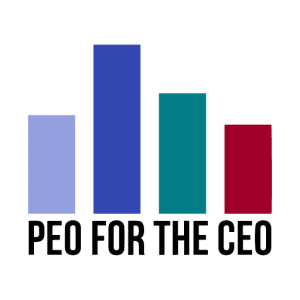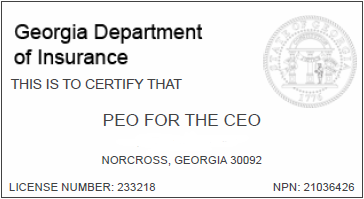Unbundling Your PEO Relationship: A Comprehensive Guide
Transitioning away from a Professional Employer Organization (PEO) can be a major shift in operational responsibility and resource allocation. While unbundling your PEO relationship offers flexibility and control, it also comes with additional tasks to manage employment, tax, compliance, and benefits functions. This guide breaks down the steps and considerations essential for businesses looking to unbundle from their PEO partnership.

1. Financial Adjustments and Cash Flow
Moving away from a PEO alters cash flow dynamics. Instead of predictable, scheduled PEO payments, you’ll face irregular and sometimes substantial lump-sum expenses for services like benefits, workers’ compensation, service fees, and tax payments. Budgeting for these fluctuations is essential for smooth operations post-PEO.
2. Tax Accounts and IDs
Leaving a PEO means taking over payroll tax responsibilities and establishing various tax accounts. Steps include:
- Applying for Tax IDs : Federal, State, and Local Tax IDs are necessary for tax compliance.
- Federal Tax Accounts : Set up withholding and unemployment accounts.
- State Unemployment Tax (SUTA) : If your PEO reported SUTA under their account, be prepared to start over and incur additional costs unless transitioning on January 1st.
- Other Tax Accounts : Prepare accounts for state and local taxes as applicable.
3. Workers’ Compensation Coverage
You’ll need a new Workers’ Compensation policy upon leaving the PEO, which requires researching coverage options and ensuring no gaps in protection.
4. Employment Practices Liability Insurance (EPLI)
Replacing the EPLI provided by your PEO is crucial to protect against claims related to employment practices. Review policy options to maintain coverage.
5. Transition to Sole Employer
Shifting from co-employment with a PEO to sole employer status changes your role in federal and state reporting requirements, new hire reporting, and overall liability. You’ll also be solely responsible for hiring, firing, and setting best practices—a role the PEO previously shared.
6. Payroll Management
Managing payroll independently involves:
- Data Entry : Handling W-4 changes, direct deposits, and payroll balancing.
- Payroll Processing : Processing and distributing checks, handling garnishments, and addressing employee inquiries.
- Compliance : Ensuring quarterly and annual filings (e.g., W-2, W-3, 940, 941) are accurate.
- Solution Setup : Implementing an in-house payroll software or partnering with a service provider to manage payroll efficiently.
7. Human Resources & Risk Management
Once separated from your PEO, HR responsibilities such as maintaining employee files, managing I-9 forms, and ensuring legal compliance under ADA, EEOC, and FLSA will require close attention. Additional tasks include:
- Updating the Employee Handbook : Create a new handbook and policies, ideally with legal consultation.
- Record Retention : Download timecards and I-9s from the PEO to ensure wage and hour compliance.
- Establishing Policies : From safety training to HR training, unbundling demands a clear set of protocols for new hires and ongoing compliance.
8. Recruitment Processes
Setting up an internal recruitment system involves both online and offline application processes. Key considerations include:
- Compliance : Ensure record-keeping meets FCRA, OFCCP, and AA requirements.
- Screening : Implement background checks and drug screening processes previously managed by your PEO.
9. Benefits Compliance
Managing benefits post-PEO requires partnering with a broker to navigate plan designs, secure cost-effective coverage, and establish compliance for programs like IRS Section 125. This involves:
- Employee Support : Developing a streamlined process for enrollments, terminations, and benefit changes.
- Communication : Keeping employees informed during open enrollment, explaining benefits, and addressing inquiries.
- COBRA Management : Securing a COBRA administrator to handle notifications and avoid compliance risks.
10. 401(k) Administration
Unbundling from your PEO requires taking over 401(k) management, including fiduciary responsibilities, payroll integration, and compliance reporting (e.g., 5500 filings).
11. Workers’ Compensation and Safety Programs
Partnering with a broker and designating an internal safety manager is essential to keep workers’ comp up-to-date and ensure compliance with safety training and incident reporting requirements.
12. Termination & Unemployment Processing
Handling terminations and unemployment claims post-PEO requires:
- Termination Processing : Ensuring documentation, benefits, and COBRA notifications are addressed.
- Unemployment : Filing in each applicable state, processing claims, and managing contestations effectively.
13. Employee Relations
Developing and maintaining strong employee relations includes creating an onboarding process, handling required paperwork, and facilitating regular communications previously managed by the PEO.
14. Leave Management
With your PEO no longer managing leave, you’ll need processes for tracking and administering employee leave to ensure accurate payroll and benefits continuity.
15. Regulatory Compliance
Keeping up with federal and state regulations in all areas where employees work is critical. You may need to hire a compliance officer or rely on legal and HR consulting to stay current with legislative changes.
16. Employee Communication
Notify employees about any changes in contacts for payroll, HR, benefits, and other inquiries as part of the transition plan.
17. Explore Tax Incentives
Look into tax incentives, including the Work Opportunity Tax Credit (WOTC), Empowerment Zone benefits, and other grants, that may be beneficial as your company takes on direct employer responsibilities.
Conclusion
Unbundling from a PEO involves significant planning, resource allocation, and process adjustments across payroll, HR, compliance, and benefits management. While it opens doors to greater autonomy, ensure you have the proper support, whether through internal hires or partnerships with consultants, to handle the transition smoothly.
Reach out to Suzanna@PEOfortheCEO.com today for personalized assistance or schedule a chat
with us.
The post Unbundling Your PEO Relationship: A Comprehensive Guide appeared first on PEO For The CEO.


